Grow Spring Cabbage: Typically The First Vegetable You Can Harvest At The Break Of Spring

VEGETABLES > CABBAGES > SPRING
Reviewed By ROY NICOL

Roy is a Professional Gardener and Horticultural Consultant, specialising in large garden year-round maintenance and garden development. He is an RHS Master of Horticulture and uses his research in the application of no-dig methods in ornamental garden settings. Roy has been a Professional Gardener for more than six years and is a member of the Chartered Institute of Horticulture, Professional Gardener's Guild and Association of Professional Landscapers (Professional Gardener).
IN THIS GUIDE
CABBAGE GUIDES
Harvesting
Sowing
Spring
Mildly flavourful and with a smooth, soft texture, Spring Cabbage or Spring Greens are a popular vegetable to grow at home.
Early Spring Cabbage is more like a leafy green than like cabbage; the smooth, loose leaves are tender and sweetish.
In fact, when picked in early spring the more apt name is Spring Greens because the vegetable is loose-leafed as it has not firmed up and developed a head (of whatever shape), which one expects in a cabbage.
Even when picked late in the harvesting season this type of ‘cabbage’ does not have the solid heart that ‘cabbage proper’ does.
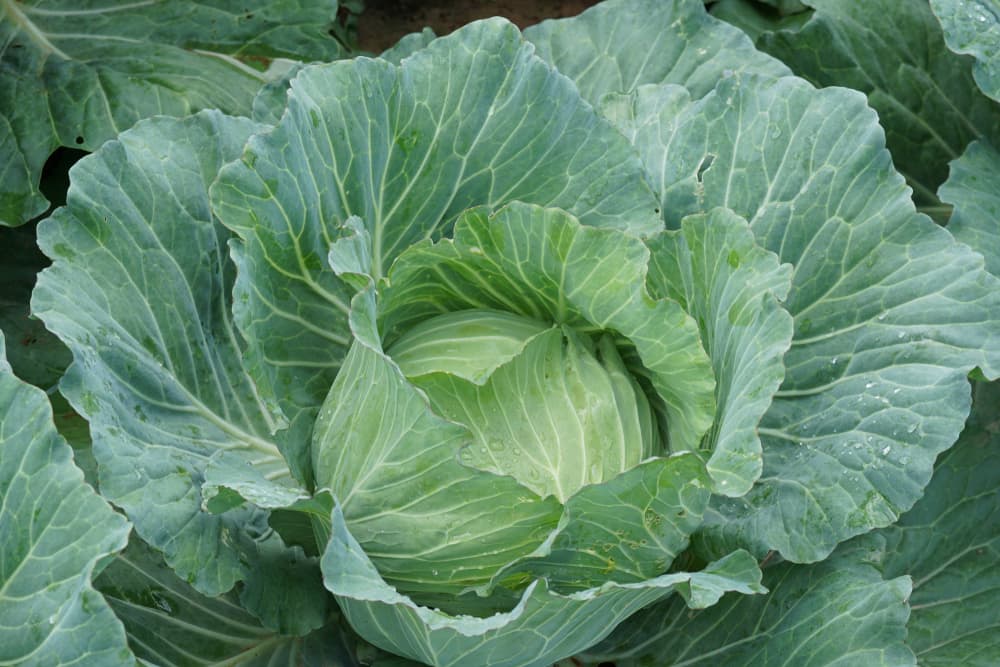
Call it Spring Cabbage or Spring Greens, this crop will probably be the first fresh vegetable you will get, and that too at ‘break of spring’.
Perhaps more of a rolled-up leafy green than a cabbage as such, it has a leafier, smoother mouth-feel and texture and does not have the crunchy succulence of cabbage, yet it usually has a stronger, sweeter flavour than most ‘cabbages proper’.
- Spring Cabbage leaves are a darker shade of greyish-green than those of the vast majority of ‘regular’ cabbage varieties.
- Varieties are mostly conical or egg-shaped but rounded forms are also available.
- Like all cabbages, they are a member of Genus Brassica which belongs to the Cabbage and Mustard Family (Brassicaceae).
- This includes vegetables like cauliflower and broccoli.
Spring Cabbage varieties, as plants that mature over the winter, are very hardy plants.
They have been and are much-valued in Northern Europe and Northern Russia where they are a key ingredient for a variety of springtime recipes.
Overview
| Botanical Name | Brassica oleracea (Capitata Group) |
| Common Name(s) | Spring Cabbage |
| Plant Type | Vegetable |
| Native Area | Cultivated |
| Hardiness Rating | H5 |
| When To Sow | July to August |
| Harvesting Months | March to May |
Sunlight
Preferred
Full Sun
Exposure
Sheltered
Size
Height
0.1 – 0.5M
Spread
0.1 – 0.5M
Soil
Preferred
Most soil types
Moisture
Moisture retentive
pH
Alkaline or neutral
Lonely and rugged in the mist on chalky, limestone coastal cliffs – it is in such inhospitable and wild regions that Spring Cabbage’s ancestral parent grew and still grows, appropriately named ‘Wild Cabbage’ – the original Brassica oleracea.
It also grows in the sandy, scrubby grassland found along coasts and shorelines.

Wild Cabbage is indigenous to Western and Southern Europe, including the British Isles.
It is the (ultimate ancestral) parent of the Spring Cabbages listed underneath, and also of other cabbages and cauliflowers.
How To Grow Spring Cabbage
Sowing
In July or August, sow Spring Cabbage seeds in the bed you have prepared or you may sow them in a seed module tray indoors.
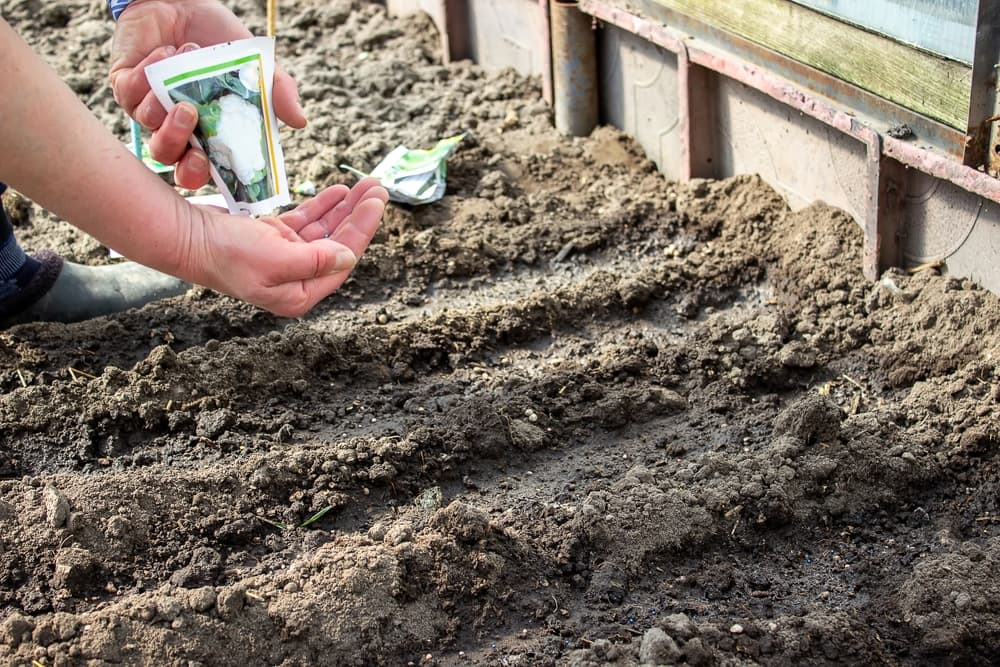
Late summer is a hospitable time to sow seeds outdoors; the reason that Spring Cabbage is typically started in a tray is to allow you to use your vegetable garden for other crops that you would harvest by September.
Instead of the additional trouble and the usual (small) risk of transplanting seedlings to save only two months, and also to keep the soil fertile and nutrient-rich for this heavy-feeding vegetable, if you live in a region that is not overly blustery and not infested with cabbage pests, sow the seeds directly in the soil.
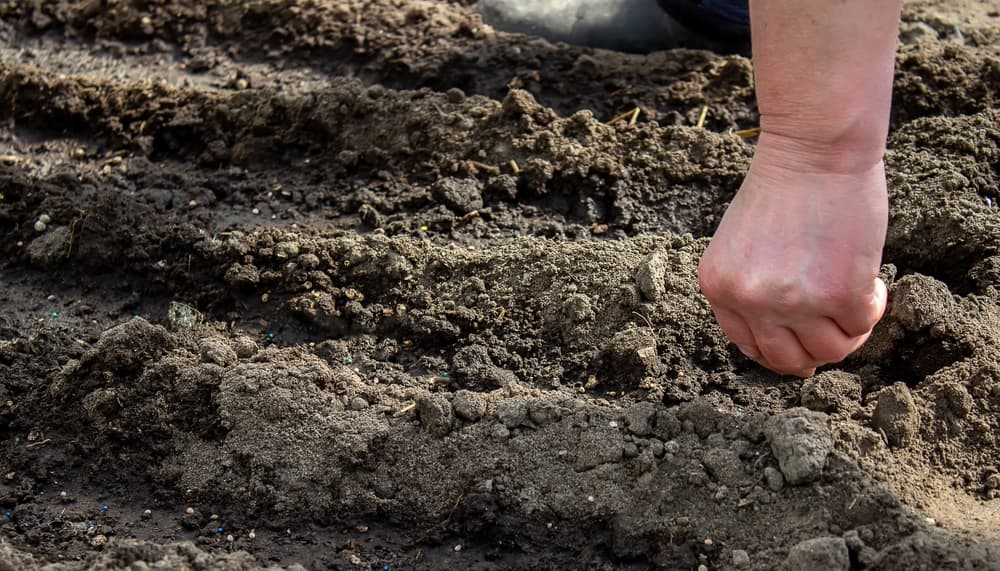
Sow Spring Cabbage seeds 20-30cm apart, across and deep.
This will allow you to thin the plants and choose the best ones, and also cover for seeds that fail to germinate and seedlings that do not thrive.
The seed should be sown about 1cm beneath the soil.
Watering & Feeding

Water well after sowing.
If you are getting some rain, drizzle the growing plants now and then.
If the weather is dry soak the bed once a week or water well twice a week.
Add some slow-release 10-5-5 fertiliser in January.
Cold Protection
You could cover seedlings overnight with horticultural fleece in the winter.
You should also do so during frigid winter nights if you think your variety of Spring Cabbage is insufficiently hardy.
As and when necessary you could also cover them up with the fleece for a short period during the day to prevent small birds from descending on your growing Spring Cabbage.
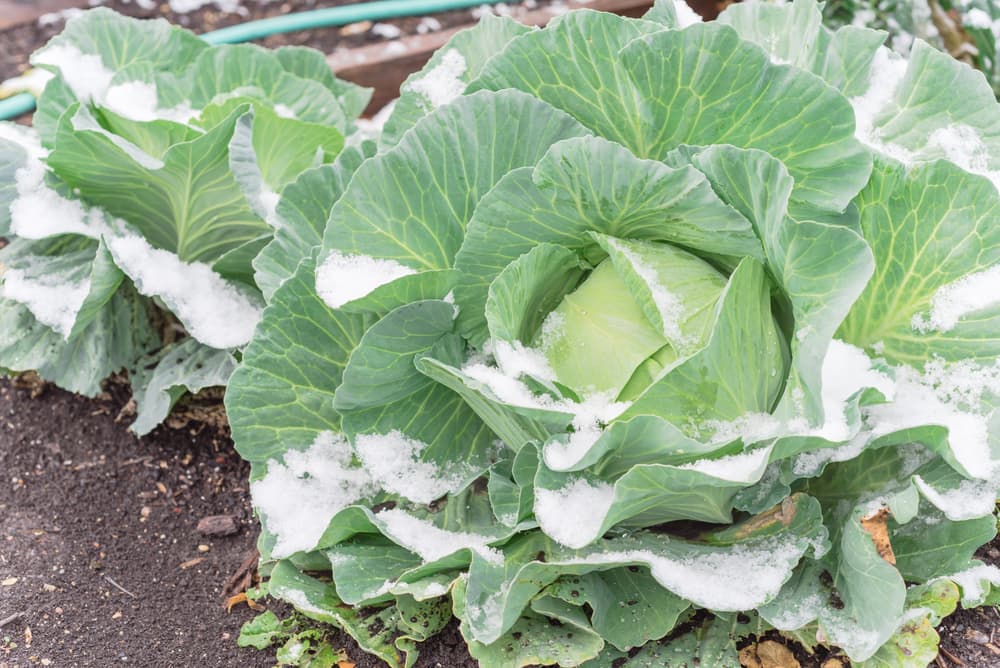
Better yet, protect your seedlings and young Spring Cabbages with Agfabric or other garden netting.
If you live in a blustery area compress the ground and protect the seedlings with a barrier made from horticultural windbreak netting.
As the plants grow, you could also pack up some soil around the base of the stem.
Thinning Out
Thin the young plants on an ongoing basis. You can do so from one month after germination through to end-Winter.
Ideally, you will eventually be left with growing plants that are 40-60cm apart but in fact, you will end up with a few plants only 25cm apart while a few others will be 75cm apart.
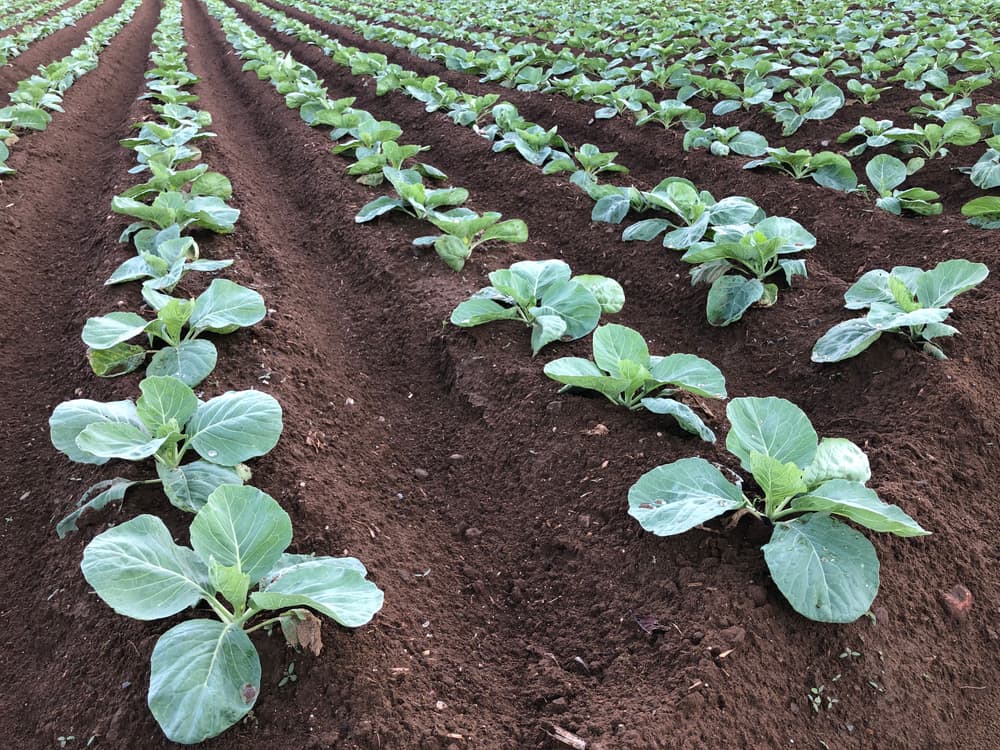
Give preference to the clearly healthier plant regardless of spacing but if it is nip and tuck between adjacent plants, select for spacing.
Experienced gardeners may wish to sow and germinate the seeds indoors in a seed module tray.
If you do so, ensure that seedlings get enough sun, start hardening them after a month, and transplant selected seedlings in mid-late-October in an outdoor bed, first soaking it in water.
Growing Conditions

The habitat and growing conditions of Wild Cabbage, the (ancestral) parent of Spring Cabbage, are rocky cliffs and other coastal settings with limestone and chalky soil.
This is very far from the habitat and growing conditions you will need for Spring Cabbage!
Preferred Soil
Spring Cabbage feeds heavily on nutrients in the soil so it needs very rich and fertile soil.
The best soil would comprise of ’standard’ loam with organic manure and garden compost added.
Soil pH should be right around neutral – 6.0 to 7.5.
Aspect
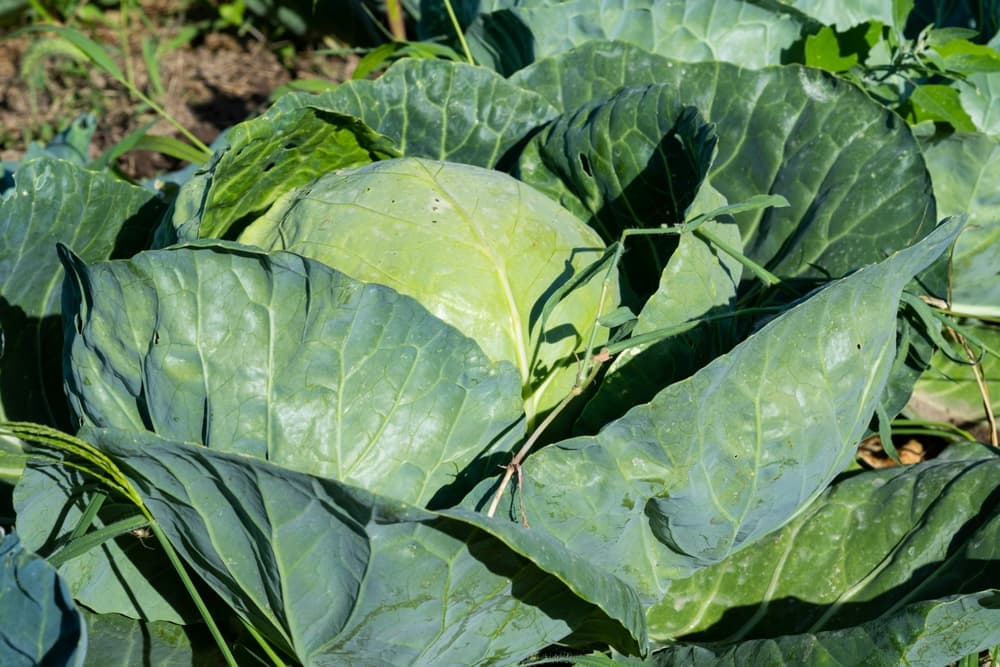
Prepare the bed one to two months before you will sow seeds (or transplant seedlings) of Spring Cabbage.
The bed should be sited in a sunny spot.
It should be well-drained but the soil itself should retain moisture.
Soil should be firmed up; it should not be light or loose.
Crop Rotation
Do not plant any Brassica, that is Mustard-Family crops, in soil or land in which Brassica crops were grown the year before to avoid soil depletion.
Such soil must be left fallow or recycled via crop rotation.
Beans, peas, and other legumes are a top choice to alternate with Brassicas.
“Such crops are ideally grown immediately before Brassicas, as they fix nitrogen in the soil, which is a nutrient which benefits the leafy growth of the spring green,” shares Roy Nicol, a Professional Gardener and Horticultural Consultant.
Essential Varieties
The following hybrids and cultivars are sequenced in an order that seeks to combine two criteria.
Ease of growing and caring, especially for beginners, and classic or ‘proper’ Spring Cabbage attributes.
‘Durham Early‘ is a heritage variety of Mid-Nineteenth Century British origin. It is a tried and trusted variety. It has a classical conical shape and the dark green leaves are appreciated for both taste and texture. It produces sweet-tasting, tender Spring Greens as early as late February. A classic Spring Cabbage.
‘Winter Jewel F1‘ is a newer variety that is flexible and does dual duty. It is a proper spring cabbage in that you sow in autumn and harvest in spring. It produces dark, leafy Spring Greens early in the season but can be left to grow and it will ‘dense up’ into a proper head. It is very disease-resistant, but as with all cabbages, can be susceptible to the fungal infection club root.
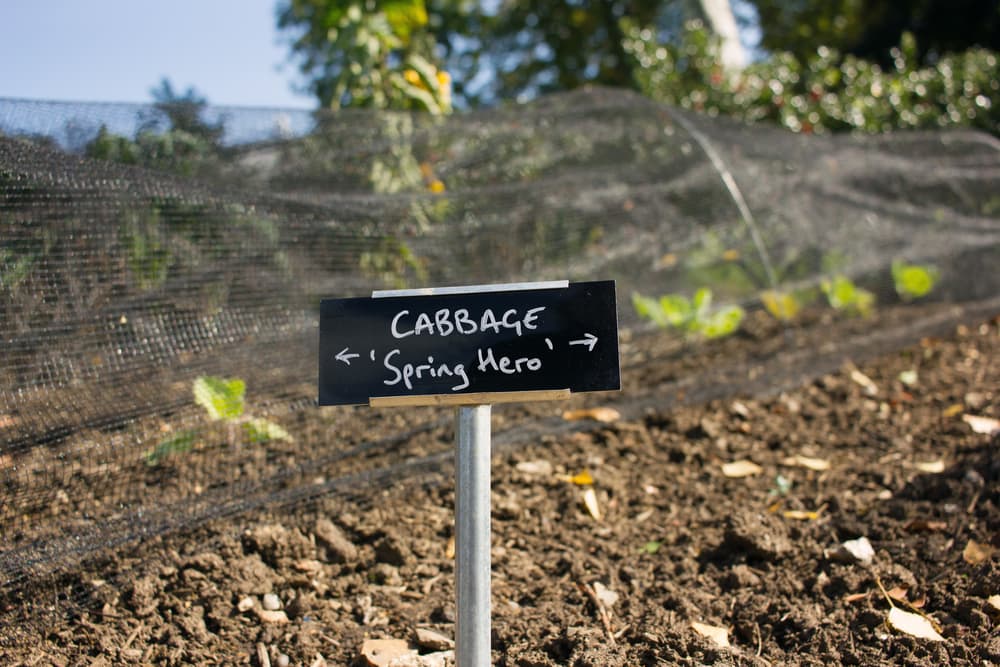
‘Spring Hero‘ is one of the newer varieties and, unlike most Spring Cabbages, is a mini ballhead. In fact, it is very similar to regular cabbage in that it has solid heads with a crispy, cream-coloured heart, and like regular cabbages it does not need to be consumed soon after it is harvested. But like Spring Cabbages you sow seeds in August and harvest in March.
‘Advantage F1‘ is also a newer variety and also does dual duty, affording flexibility in sowing and harvesting seasons; thus, it reliably grows as not only a Spring Cabbage but also as a Summer or Autumn Cabbage. Left to mature it will grow a heart and become denser.
‘Wheelers Imperial’ is a British heritage variety dating to the mid-1800s. It is less loose and firms up quicker, producing conical hearts that are relatively solid but tender. The head can also be fairly dense. Leaves are dark green. This is another tried and trusted variety that overwinters very well.

‘Hispi F1‘ is not exclusively a Spring Cabbage, having been developed for multi-season sowing. However, it is a remarkable hybrid that competes with and even outdoes the best of Spring Cabbages in the short time within which it is ready for harvest, and reliably so. It is of conical form, is robust, and is valued for its sweet taste. It is bolt-resistant.
‘Pixie‘ is of comparatively recent vintage but is not a new variety. It has a medium green colour and is smaller than average. It is more like a baby cabbage than Spring Cabbage. If not harvested early the leaves will become dense and it will grow a compact head. It is a little crisper than other Spring Cabbages.
Other Varieties
Innumerable varieties of Cabbage exist. In fact, Spring Cabbage is only one type or grouping of cabbage.
This vegetable can be divided into five further main groupings: Summer Cabbage, Winter Cabbage, Savoy Cabbage, Red Cabbage, and Heirloom or Heritage Cabbage.
Though each grouping has its own specific varieties, one variety may fall in more than one grouping.
For example, Summer Cabbages, which are mostly ball-heads, include Stonehead, Golden Acre, Greyhound, Napa, and Hispi.
And these are only the varieties that are well known and popular in Europe and America!
Eastern Europe and Russia, for example, have other Summer Cabbage varieties.
Many other, very different, varieties make up the other Cabbage groupings.
Common Problems
Spring Cabbage is susceptible to Cabbage root fly and Cabbage white caterpillars.
You can guard against root flies by growing your crops under fine garden netting, which should also prevent cabbage white butterflies from laying eggs with the resulting caterpillars, but the netting should not touch the plants’ leaves.

If you see caterpillars, pick them off to begin with.
Instead of using Bacillus thuringiensis products on your food crop, try a homemade organic formula.
Make a solution of vinegar and garlic by mixing one teaspoon of vinegar and two of garlic powder into a litre of water and spray on and around the cabbages.
Prepare a more concentrated solution if necessary.

